Take any space and add a reflective surface and it will instantly enlarge that area and add some much needed dimension. Mirrored areas can reflect or redirect light. When using mirrors in a space, you can essentially echo another part of the room to visually trick the eye to make a space feel larger.

images via House Beautiful
Mirrored walls or a large freestanding mirror in the room can open up an area instantly. This foyer has a freestanding mirror behind the console table which gives added dimension to the space. Note the floor to ceiling application emphasizes the high ceiling.
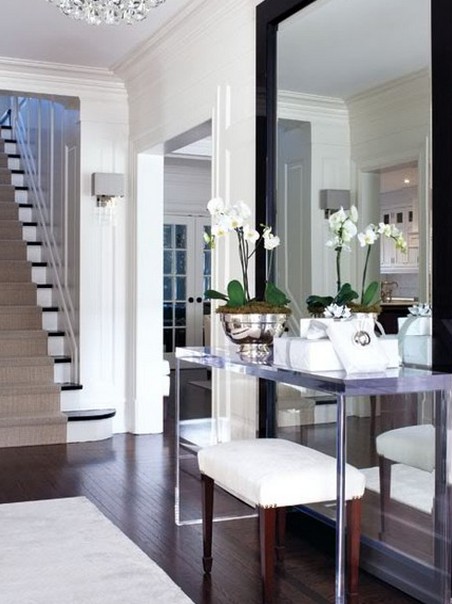
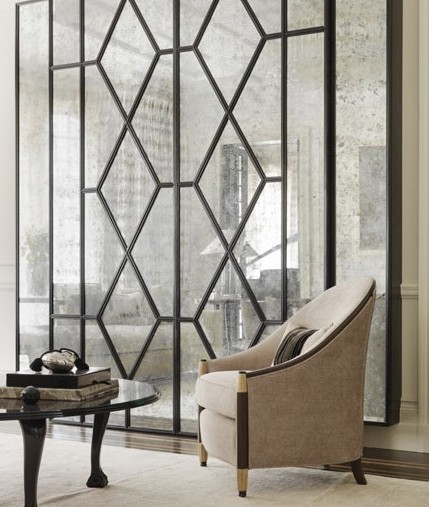

images via pinterest
Consider adding artwork to the mirrored wall just as you would on any wall in a room. By mirroring the side walls along with the main wall of this alcove, it then creates more reflective surfaces while adding interest to the space.
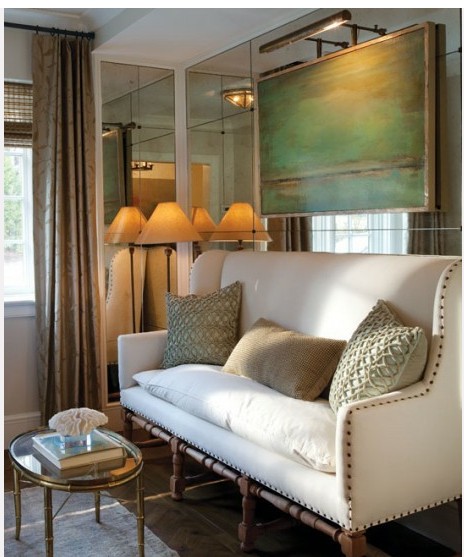
The mirror you see in a typical bathroom or in a framed mirror is usually a back-silvered mirror. The reflective surface applied to the back is typically aluminium or non-toxic silver that is seen through a thin layer of glass.
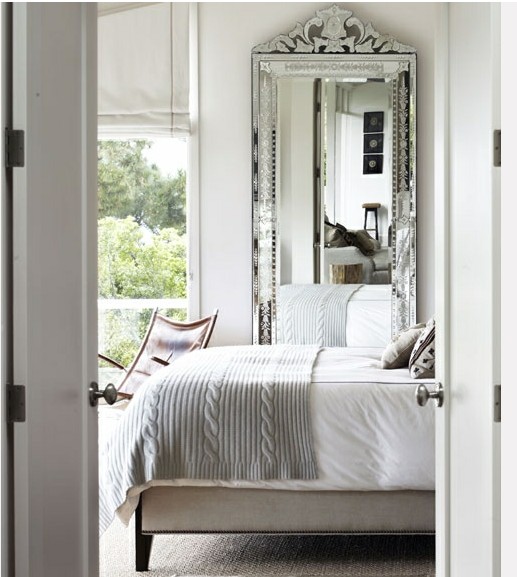
Antique mirrors have an aged or distressed quality to them. This is achieved by distressing or removing portions of the backing of the mirror.
Mirrored tiles, especially antiqued ones, can be added to an existing wall or to a back-splash area. Many applications include rosettes where the corners of the mirror meet.
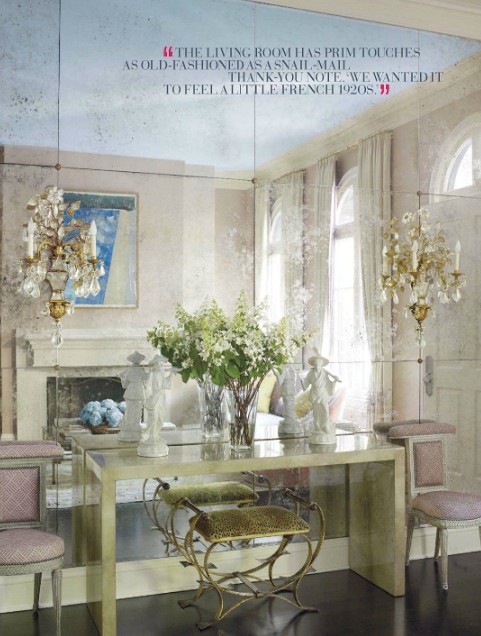
source unknown
This application at the stairwell is a great addition to this space. The glass wall reflects the same design elements as the mirrored section on the wall and becomes a great architectural feature in the space.
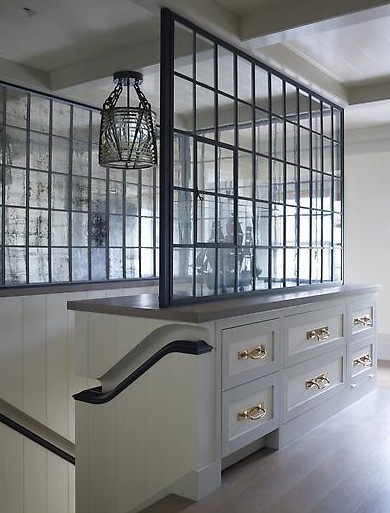
image via pinterest